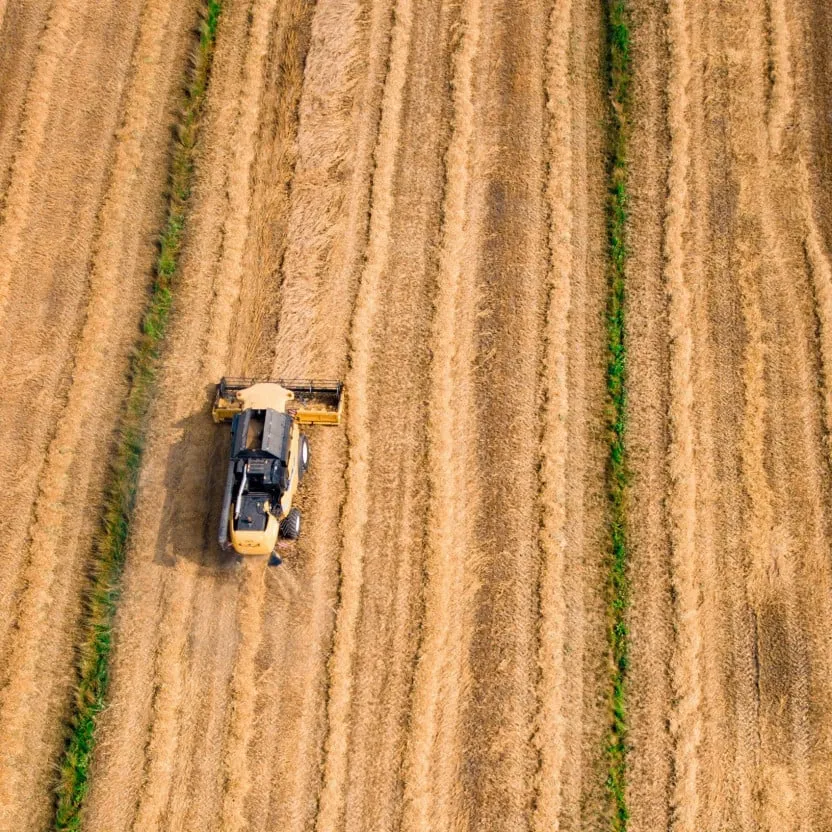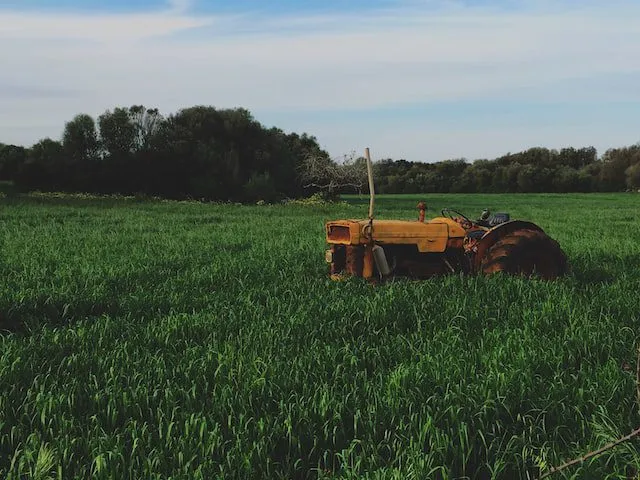Recruiting Farm Workers from Overseas to Work in the US
The lack of available labor has affected agriculture in the US. Thankfully, there are some creative solutions being developed by the government to hire seasonal workers. The seasonal agricultural workers scheme can help you get the right employee.
We can walk you through the process of hiring foreign workers and make sure everything is done correctly so your business stays compliant with government regulations. Contact us in person or online or call us today at 0330 311 6351 for quick support and assistance. Read on to find out all you need to know about recruiting seasonal workers from abroad and the possible immigration routes for your temporary staff.
Read our 1001 reviews
To Recruit Farm Workers from Overseas
- Stick with the employment standards
- Abide by the regulations regarding the hiring of young persons or temporary foreign workers
- If you hire a farm labor contractor, make sure they are authorized and adhere to the rules.
- Make any necessary federal payroll deductions, such as for employment insurance, Canada Pension Plan, and income tax.
- Meet the criteria of WorkSafeBC
H-2A Visa Program
The H-2A temporary agricultural workers program, also known as the H-2A visa program, enables American farmers to find people with skills to fill labor shortages by employing workers from other nations. Most times, employers benefit from a network of recruitment agencies.
These agencies or labour providers specialise in finding qualified candidates in the shortest period of time.
Employers who foresee a shortage of domestic workers might use the H-2A temporary agricultural program to assist them in hiring foreign workers for temporary or seasonal agricultural work in the U.S., such as planting, cultivating, or harvesting.
Temporary or seasonal agricultural employment might occur on farms, plantations, ranches, nurseries, ranges, greenhouses, orchards, or other similar places, depending on the type of work you need to complete.
- Seasonal work is when you need more support than usual since the task is bound to a given time of year by an event or trend. You may need seasonal labour for a specific harvest season or a brief annual growing cycle.
- A year is the maximum duration of temporary employment.
You might not be eligible for the program if you have experienced a strike, work stoppage, or layoff within 60 days of starting employment.
You must diligently seek American workers in cooperation with your State Workforce Agency if you want to take part in the program.
Your job order will be made public by the State Workforce Agency in an effort to hire Americans.
Also, you must contact any former US employees at their last known contact information in addition to accepting qualified referrals of US workers who apply for the position.
Besides, you must continue to employ an eligible U.S. applicant after they apply until fifty percent of the agreed-upon employment time has passed.
There is no longer an affirmative duty to hire after fifty percent. It is also possible for migrant workers to fill permanent roles but.

Steps For Participating in the H-2A Visa Program
Find out how to extend the employment contract for current H-2A workers and hire new workers under the H-2A visa program.
H-2A Visa Application Paths
These phases and federal agencies are often involved in the H-2A visa application and extension processes.
STANDARD
The following procedures make up the typical filing procedure for recruiting H-2A workers, which should take about 75 days including the details below.
- The farmer contacts the neighborhood State Workforce Agency to get a domestic job order.
- The farmer submits an application for temporary labor certification to the Chicago National Processing Center of the Department of Labor.
- The farmer receives the Department of Labor’s final determination from the Chicago National Processing Center.
- A petition for an H-2A visa is submitted by the farmer to US Citizenship and Immigration Services.
- Employees complete a Department of State H-2A visa application and a consular interview.
- Workers who have been given the go-ahead proceed to the job site and show up on time with an arrival/departure record.
EMERGENCY:
If the farmer needs H-2A labor in less than 75 days, they should consider using the emergency filing procedure.
- The farmer should simultaneously file for a temporary labor certification with the Department of Labor’s Chicago National Processing Center and submit a job order to the State Workforce Agency during emergency filing.
- The farmer should next proceed in the same manner as a typical filing.
- The farmer receives the Department of Labor’s final determination from the Chicago National Processing Center.
- A petition for an H-2A visa is submitted by the farmer to US Citizenship and Immigration Services.
- Migrant workers complete interviews at consulates and apply for the H-2A visa through the National Processing Center of the Department of State.
EXTENDING WORKERS
For the purpose of extending an H-2A visa contract, farmers have two options.
- A brief prolongation of not more than two weeks
The farmer sends the US Citizenship and Immigration Services a Petition for a Non-Immigrant Worker. - A protracted postponement of more than two weeks
- The farmer sends the US Citizenship and Immigration Services a Petition for a Non-Immigrant Worker.
- The farmer notifies the Chicago National Processing Center of the US Department of Labor about the request for an extension.
H-2A Employers and Agents
The federal H-2A temporary agricultural worker program provides agricultural firms with a way to temporarily or seasonally hire foreign non-immigrant workers in the United States if they anticipate a labor shortage among domestic workers.
Employment is of a seasonal character when it is linked to a certain time of year by an occurrence or pattern, such as a brief yearly growth cycle or a particular portion of a longer cycle, and it necessitates labor levels above that required for ongoing, year-round operations.
Temporary employment means that, barring exceptional circumstances, the business will only need a temporary employee to serve the role for a maximum of 10 months. The employer must create the federal ETA Form 790 Agricultural and Food Processing Clearance Order through the online FLAG system to participate in the H-2A program.
The task order has already been pre-approved by the Foreign Labor Certification Unit (FLCU) of the New York State Department of Labor.
No later than 75 days and no earlier than 60 days before the employer’s date of requirement, the employer must upload the finished ETA 790 to the FLAG system.
The employer will be notified that the job order has been accepted after it has been received and entered by FLCU employees into the New York State Job Bank.
He or she can then deliver the pre-approved ETA Form 790 and ETA Form 9142A to the USDOL’s Chicago National Processing Center.
The job order must specify that it will be used in conjunction with a future Application for Temporary Employment Certification (ETA Form 9142A). The job order must adhere to the terms and conditions of 20 CFR 653.501 and 20 CFR 655.135.

Agents Acting on Behalf Of New York’s H-2A Employers
The agents/attorneys listed are those that H-2A employers in New York currently engage in completing H-2A-related paperwork, hire workers from abroad, and offer general support in the H-2A process. The FLCU of New York is not permitted to favor one representative over another. Employers who wish to hire any of these agents may request a copy of this list of agents.
Wage Theft Prevention Act Resources For H-2A Employers
You may use a number of forms and other tools that are given to help employers comply with New York’s Wage Theft Prevention Act (WTPA) .
Work Agreement and Pay Notice For H-2A Employers
When correctly filled out, Federal Form ETA 790 satisfies a portion of New York’s Wage Theft Prevention Act (WTPA) requirements. The US Department of Labor has created a paper with instructions to help in filling out the ETA 790. The ETA 790 is a beneficial tool for all agricultural businesses to comply with the WTPA even though it is necessary for foreign labor certification and can also be utilized to participate in the agricultural recruitment system.
Paying Wages: For their labor, farm employees may be paid a piece rate, an hourly wage, or a salary. Payment must be made to all farm laborers at least twice per month.
Farms occasionally employ laborers via a certified farm labor contractor. Farm laborers are employees of the certified farm labour contractor who hired them, even if they work at separate farms. Farm employees who a farm labor contractor engages must get direct deposit payments for their wages. Farmers’ compensation is the responsibility of farm labor contractors and producers.
Farm laborers are not compensated for statutory holidays or overtime. Farm employees cannot be required or permitted to work excessive hours that endanger their health or safety.
The Seasonal Agricultural Worker Program (SAWP) contract must be followed when paying farm employees.
Piece Rate: Farm employees who manually harvest crops may receive piece rates. The crop they are harvesting must receive at least the minimum piece rate.
Piece rate x volume or weight selected is the formula for piece rate work.
The piece rate for each crop, the size of the picking containers, and the amount required to fill a container must all be disclosed in signs that employers must post on-site (i.e. volume or weight). Additionally, they must supply “picking cards” so that employees can record the total volume or weight of the items they select.
With the exception of daffodils, vacation pay (4%) is included in piece prices.
Hourly Or Salary Wages: Farm employees must be paid at least the minimum wage, whether hourly, by salary, or in any other way. They also get paid and have to time off.
Paying Wages: At least twice a month, and within eight days of the end of each pay period, employees must be paid. Direct deposit is required for the payment of seasonal workers hired by farm labor firms.
Get in touch with our team today to learn more about our professional services. CONTACT US
H-2A Recruitment & Termination Tools
Recruitment: Employers must provide evidence of their efforts to find domestic employees for the H-2A job order to participate in the H-2A Guest Worker Visa program, among other things. Several H-2A businesses have been in touch with the Agriculture Labor Program of the New York State Department of Labor to inquire about a template for the recruitment report. The New York State Department of Labor has developed a tool, FORM AL 156, to help employers comply with this federal requirement since the U.S. Department of Labor currently does not offer such a template. Although employers are not obligated to utilize the application, it was developed as a service for them. Please see this description of the tool for a more thorough explanation.
Terminations: When terminating the employment of workers employed under an H-2A contract, H-2A employers must follow federal and New York State regulations. This form, FORM AL 156.4, provides information.

Inspections By the Compliance and TFW Team
The rights and safety of workers in the farm sector are safeguarded by a coalition of organizations known as the Inter-Agency Agriculture Compliance Committee. Education, prevention, and enforcement are the committee’s main priorities.
The inter-agency committee includes the Employment Standards Branch’s Compliance and TFW Team.
Their responsibility is to ensure that farmers, agricultural producers, and farm labor contractors adhere to the requirements of the Employment Standards Act.
The crew visits farms where work is being done and inspects the trucks used to transport personnel by farm labor companies. During farm visits, they review records, watch operations, interview workers, and speak with the owner/producer and agricultural labor contractors.
There are no scheduled visits. A punishment of $500 to $10,000 might be imposed for refusing to let the team visit.
The team will attempt to speak with the farm owner, producer, or manager when they arrive at the location to explain the reason for the visit and provide proof of their official identification. The team will then enter the area to conduct a few quick interviews with any on-site employees and representatives of the agricultural labor contractor.

The team may request to see specific information, including:
From The Farm Owner/Producer:
- Name and telephone number of the farm
- Name of all farm labour contractors on site
- Rate being paid to the farm labour contractor
- Rate being paid to workers employed directly by the farm owner/producer
- Records being kept for the work done by the farm labour contractor, such as how many workers are brought each day and their hours worked
- Confirmation that the farm owner/producer has reviewed the farm labour contractor’s licence
- Number and ages of children under the age of 15 on site
- A blank copy of the picking cards being used by workers
- Payroll records for workers employed directly by the farm owner/producer
From The Farm Labour Contractor:
- Number of employees on site
- Daily log
- Number and ages of children under age 15 on site
- Wage rate being paid
- Vehicle registrations and inspection certificates, driver’s licences and safety notices
- Payroll records for workers employed by the farm labour contractor
From overseas Workers:
- Name, address, and phone number
- First day worked
- Picking card number
- Wage rate
- How often wages are paid
- Confirmation that wages are paid by direct deposit if employed by a farm labour contractor
- Confirmation that vacation pay is properly calculated and paid if paid an hourly rate
Seasonal and migrant workers are essential to the success of agriculture in south east regions like North Carolina and other US states. Many of California’s economically important crops, such as tobacco, cucumbers, sweet potatoes, berries, peaches, apples, and Christmas trees, require hand labor to plant and harvest.
Table of Contents
Table of Contents will appear here.Table of Contents
Table of Contents will appear here.Legal Disclaimer
The information provided is for general informational purposes only and does not constitute legal advice. While we make every effort to ensure accuracy, the law may change, and the information may not reflect the most current legal developments. No warranty is given regarding the accuracy or completeness of the information, and we do not accept liability in such cases. We recommend consulting with a qualified lawyer at Immigration Advice Service before making any decisions based on the content provided.















